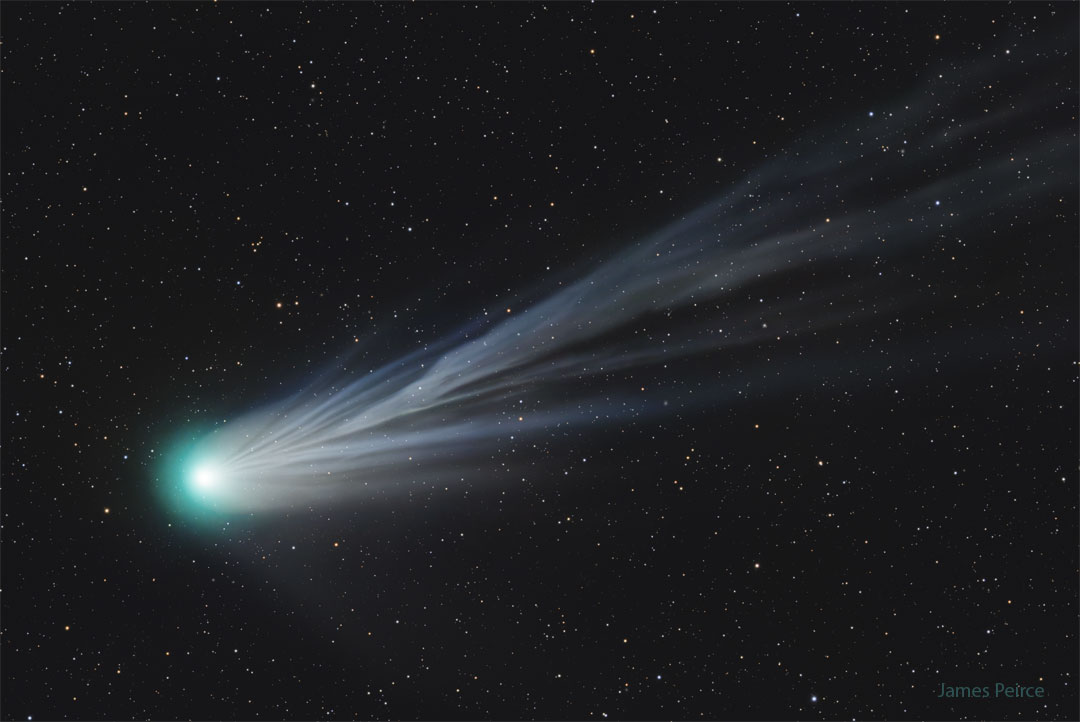2024年3月26日
Comet Pons-Brooks’ Ion Tail
Image Credit & License: James Peirce
Explanation: Comet Pons-Brooks has quite a tail to tell. First discovered in 1385, this erupting dirty snowball loops back into our inner Solar System every 71 years and, this time, is starting to put on a show for deep camera exposures. In the featured picture, the light blue stream is the ion tail which consists of charged molecules pushed away from the comet’s nucleus by the solar wind. The ion tail, shaped by the Sun’s wind and the comet’s core’s rotation, always points away from the Sun. Comet 12P/Pons–Brooks is now visible with binoculars in the early evening sky toward the northwest, moving perceptibly from night to night. The frequently flaring comet is expected to continue to brighten, on the average, and may even become visible with the unaided eye — during the day — to those in the path of totality of the coming solar eclipse on April 8.
Tomorrow’s picture: thousands of galaxies
庞士-布鲁克斯彗星的离子尾
影像提供与授权: James Peirce
说明: 庞士-布鲁克斯彗星的彗尾颇有可观之处。这颗发现于1385年、不停喷发的脏雪球,每71年会回访太阳系的内围一次,而在此次的回访中,它已开始在相机拍摄的深空影像里大展风华。于这幅主题影像里,淡蓝的尾流,是受到太阳风推送而远离彗核的带电分子所形成的离子尾。也因此,受到太阳风及彗核自转塑造的离子尾,总是指向远离太阳的方向。目前在初入晚夜空的西北隅,用双筒望远镜可以见到彗星12P/庞士–布鲁克斯的身影,而且每晚都有明显的位移。这颗经常发生爆发的彗星,预期会保持其增亮的取向,而在4月8日的日食之全食带里,或许有机会在白天以肉眼见到这颗彗星。
明日的图片: thousands of galaxies




Pingback: 声化: 名为水母星云的超新星遗迹 – NASA中文